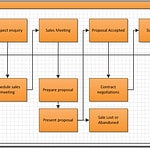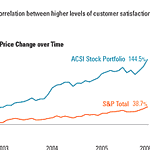It was a great internal brain storming session to collect questions for your new customer feedback survey.
And, over the last few days you’ve wordsmithed away and now the questions are just right.
Soon you’ll be loading them up into your survey tool and emailing the feedback invitations.
But, if you don’t want your survey to bomb, make sure you run it through these six TRACER customer feedback survey attributes before you hit ‘send’.
- Try to Collect a Random Sample
- Respect your Customers
- Actionable for Your Business
- Clear and Unambiguous
- Easy to Respond
- Relevant
The ideas are simple but very important to ensure that your survey is going to be efficient, effective and actionable.
Try to Collect a Random Sample
Many times you will be surveying all of your customers so you will be using a sampling approach. That just means that you will invite a subset of your customers to respond.
When you do this, it is very important that this subset of customers is a random selection of all of your customers. That ensures that the feedback you collect is representative of all customers.
It can sometimes be tempting to send surveys only to those customers that you know like you or your business. Getting all of that positive feedback is great for the ego.
On the other hand, some managers will target un-happy customers with the idea of finding all the things that are going wrong in the business. This feedback can be quite depressing to read and give you a false sense that everything about the business is going wrong.
The truth is usually somewhere in the middle. You are only going to hear both types of feedback if you select a random sample of customers to invite to your survey.
In practice this can be quite simple to do. Just pick a simple rule to select customers to receive a customer feedback invitation and then stick to it, e.g.
- Every fifth order
- Sort customer names in alphabetical order and select every 4th customer.
When deciding on this rule make sure that you don’t accidentally introduce a factor that might cause you to miss an issue in your business.
For instance, if you select orders taken between 10am and 12pm each day, you might miss problems that occur later in the day or first thing in the morning.
Respect your Customers
The next thing you need to do is respect your customers, and respecting your customers comes in a few different flavours.
Remember, the customer is providing feedback to you in a survey and is spending their time to help you. In essence, they are providing you an unpaid service. Don’t abuse that favour by being disrespectful of them or their time.
The most common forms of customer feedback disrespect are:
Long Surveys
Try to keep the survey as short as possible and only ask what you really need.
If you really believe that you need to ask 30 questions (and trust me you don’t, ever), at least split up the survey so each respondent only receives 15 questions. Then send the two different surveys to different, random, groups of customers.
In reality, you don’t need those 30 questions because the Pareto Principle works in survey feedback just as it works in other places. It is very unlikely that 30 attributes are all important to customers.
A better way is to set a maximum question limit; 10 is a good number, and stick to it. That limit forces you to trade off the questions and only keep the most important ones.
So focus on the most important areas of your business and don’t create a Christmas tree of questions that ask everything you can possibly think of.

Mandatory Questions

Another disrespectful thing to avoid is mandatory customer survey questions.
Telling your customer they must respond to a question is being disrespectful.
If they don’t have a good answer, or don’t want to answer that question, then they should be allowed to move on. Remember, they are responding to a voluntary survey.
In any case, while that might seem like a good idea, mandatory questions are almost never are, because they generate bad data and inaccurate information.
For example, say you have a question that asks about a person’s age. If it is mandatory and they don’t want to answer, they will either abort the survey or respond with an inaccurate answer.
Either way, it’s a bad for your customer feedback process.
If they abandon the survey, you have lost a response.
If they choose to answer, congratulations, you have a piece of data but it’s wrong. Plus, lots of other people will have done the same thing. Now all the data in that question is suspect and, almost, worthless.
Actionable for Your Business
Next, ensure that all the information you collect is going to be actionable for your business.
There are lots of questions you might like to ask and lots of questions that you might think are interesting. But you need to make sure all the questions you ask you can turn into some action for your business.
An example of a question that might not be actionable is:
How easy to understand was the documentation from our supplier.
That’s a well formed question and one to which to you might be interested to know the answer. However, if you can’t action it, i.e. if there’s no way to get your supplier to change the documentation, then don’t raise the subject.
The upside here is that you also shorten the survey.
If you are looking to improve customer service in your business try asking questions that are clearly targeted at the attributes of service:
- How responsive were we
- How tidy was our waiting room
- How easy was it to make a booking
Clear and Unambiguous
Make sure your survey, all of your questions and everything about your survey (introduction, layout, etc.) is very clear and unambiguous.
This makes it easy for the respondent to actually do the survey and the information you receive is clear and easy to use.
One really good example of this is avoiding double-barrelled questions in your survey. An example of a double-barrelled question is:
Please rate the speed and accuracy of our response to your support question.
You can see in that particular question there are two ideas, “speed” and “accuracy”.
The problem is that the customer can’t respond to both ideas in the one question. So they will either respond to the “speed” question or they’ll respond to the “accuracy” question.
This key problem here is similar to the mandatory questions above: you never know which question the customer has answered. So you never really know what changes you need to make in your business.
A good way to ensure that your survey is clear and unambiguous is to send a test to someone who has never seen the survey before. Ask them to take the survey and let you know if anything is unclear or difficult to understand.
Spouses and friends are great testers as they are not as close to the design survey process and can give you independent feedback.
Easy to Respond
Make sure your survey is easy for the customer to respond to. Normally, this means web-based surveys and not paper-based surveys.
This also means keeping the survey short and using questions that are easy for respondents to complete.
It may surprise you but different question types have different levels of difficulty to complete for the respondent.
For instance, rating questions are generally easy to answer:
How responsive was our service desk, from 1 to 7, were 1 is un-responsive and 7 is very responsive.
However free form text responses are more difficult:
Please tell us what you liked most about our service.
With a free comment field, the respondent must collect their thoughts and write a response. That is more difficult than selecting a pre-written response.
You definitely need free comment questions, but just make sure that you don’t include too many of them: one or two per survey is generally more than enough.
Another difficult to complete question type is the prioritizing question:
Please order these features in order of importance to you.
It should be clear that this type of question takes quite a lot of mental effort. That makes it harder to respond to and more difficult for the customer.
Again you can include these types of questions but do so very sparingly.
Relevant
Last but not least, make your survey relevant.
This is a bit like the “Actionable for your Business” topic above. Make sure all the questions are relevant to your business.
The TRACER survey attributes are not complex but they are all important reminders of how to create the most effective customer feedback survey.
Now grab that survey you have created and test it against TRACER. Make some changes and only then hit ‘send’.








